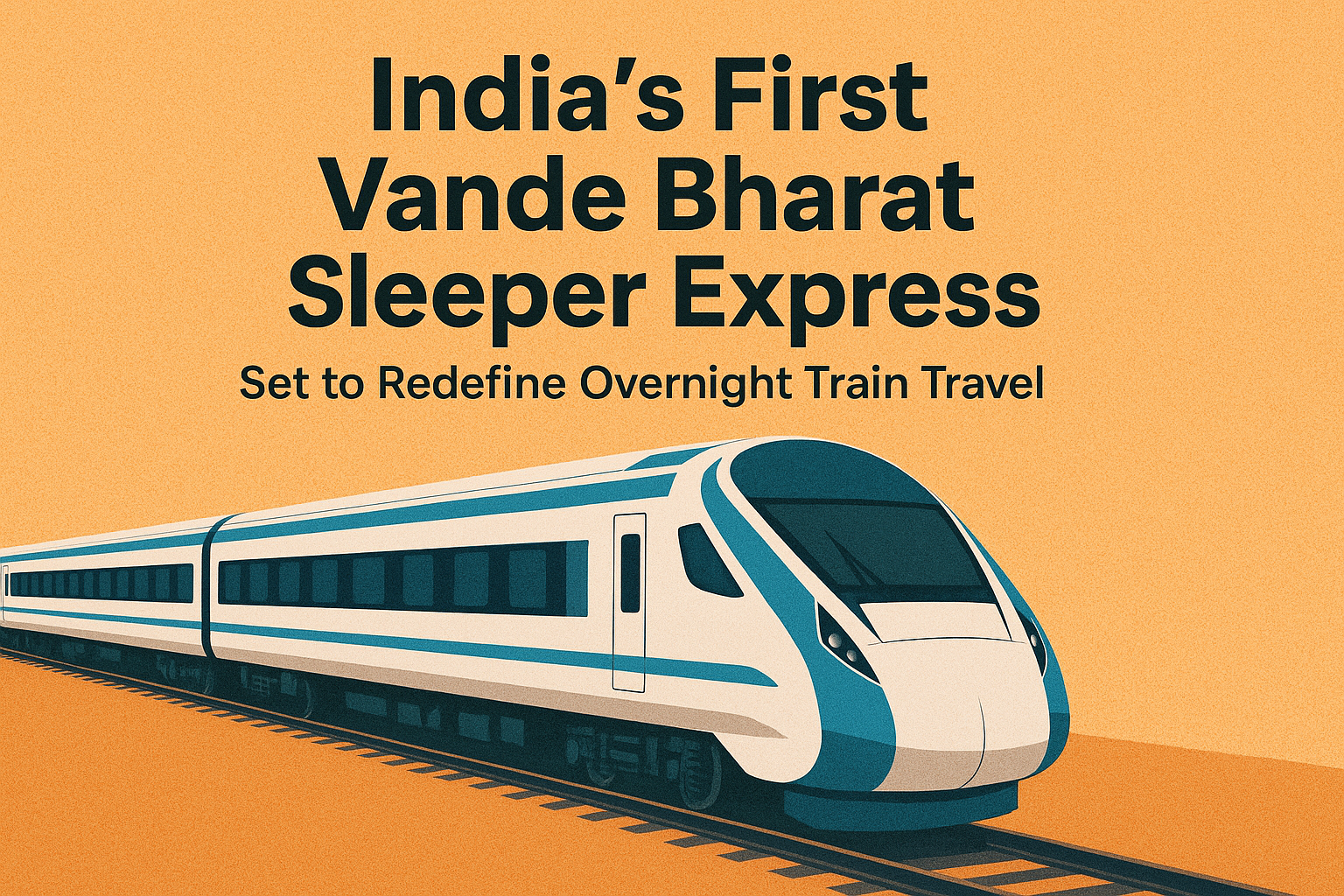
India’s First Vande Bharat Sleeper Express Set to Redefine Overnight Train Travel
Indian Railways is preparing to script a new chapter in modern travel with the launch of the country’s first Vande Bharat Sleeper Express, a project that blends high-speed technology with overnight comfort. Expected to roll out just before Diwali 2025, the service will connect Delhi and Patna via Prayagraj in a record 11.5 hours, setting a new benchmark for long-distance journeys.
A Leap in Overnight Travel
Until now, the Vande Bharat Express has been synonymous with fast, semi-high-speed chair car services. However, overnight journeys between major cities demanded a different approach. By introducing a sleeper version, Indian Railways has responded to the needs of millions of passengers who prefer berths over reclining seats for long-haul travel.
The upcoming service on the busy New Delhi–Patna corridor is designed to reduce travel fatigue while saving precious time. For perspective, existing trains on this route, including the Rajdhani Express, often take 12 to 17 hours. The new Sleeper Express will bring that down to just 11.5 hours, a development that could transform passenger preferences.
Key Features of the Vande Bharat Sleeper
- The Sleeper Express is not just about speed—it’s about comfort, safety, and convenience. Some of its standout features include:
- Berth-based travel: Unlike the traditional chair-car Vande Bharat, this train has comfortable sleeping berths for overnight journeys.
- High speed: With a top operational speed of 180 km/h, the train promises efficiency without compromising safety.
- Advanced safety systems: From CCTV cameras and modern fire-safety tools to automatic doors with sensors, passenger security has been made a top priority.
- Smart interiors: Inspired by aircraft design, the interiors come with LED screens for infotainment and an elegant finish that adds to the premium experience.
- End-to-end digital facilities: On-board announcements, real-time updates, and modern communication systems ensure smooth travel.
The train is being manufactured with Integral Coach Factory (ICF) technology by Bharat Earth Movers Limited (BEML), both pioneers in India’s railway modernisation efforts.
Expected Ticket Pricing
According to reports, ticket prices are expected to be 10–15% higher than Rajdhani Express fares. While this may sound like a premium, the shorter travel time, better amenities, and improved safety standards are likely to make the service attractive to passengers. For many, the added cost may be a small price to pay for the convenience of reaching Delhi from Patna faster and more comfortably, especially during the festive rush.
Why Delhi–Patna as the First Route?
The Delhi–Patna route is among the busiest in the country, particularly around festive seasons like Diwali and Chhath Puja, when thousands of migrants travel back to their hometowns. The demand far outstrips supply, often leading to overcrowded trains and long waiting lists.
By choosing this corridor, Indian Railways is addressing a high-demand route, ensuring that the Sleeper Express makes an immediate impact by easing congestion and offering travelers a much-needed faster option.
Boost to Bihar and Uttar Pradesh Connectivity
The new service is not just about convenience; it’s a major step toward boosting regional connectivity. Both Bihar and Uttar Pradesh stand to benefit, as the faster turnaround will improve economic mobility and accessibility. Business travelers, students, and families will now have a high-speed option that reduces overnight travel stress while bringing them closer to the national capital.
A Glimpse Into the Future of Indian Railways
The launch of the Vande Bharat Sleeper Express signals the government’s intent to push forward with railway modernisation at a faster pace. Until now, premium overnight travel was largely limited to trains like the Rajdhani Express. The new entrant not only modernises this experience but also raises the bar for what passengers can expect from Indian Railways in the coming years.
If successful, the model is likely to be replicated on other long-distance routes such as Mumbai–Delhi, Chennai–Delhi, and Kolkata–Delhi, where overnight travel is in high demand.
Conclusion
The Vande Bharat Sleeper Express is more than just another train—it is a symbol of progress. By merging high-speed technology with the comfort of overnight berths, Indian Railways is catering to both efficiency and passenger comfort. As the train gears up for its maiden run ahead of Diwali 2025, it promises not just a new way to travel between Delhi and Patna, but also a glimpse of what the future of Indian travel could look like: faster, safer, and far more comfortable.





